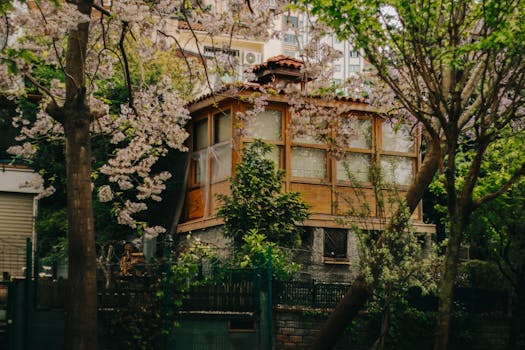
Urban Green Spaces: The Future of Outdoor Living in European Cities by 2025
Urban Green Spaces are becoming increasingly important in European cities, and their significance will only continue to grow by 2025. As the world becomes more urbanized, the need for green spaces in cities is becoming more pressing. In this article, we will explore the benefits of urban green spaces and how they will shape the future of outdoor living in European cities.
Benefits of Urban Green Spaces
Urban green spaces offer numerous benefits to both the environment and the people living in cities. Some of the most significant advantages of urban green spaces include:
- Improved air quality: Urban green spaces can help reduce air pollution by absorbing pollutants and producing oxygen.
- Reduced urban heat island effect: Green spaces can help mitigate the urban heat island effect, which can make cities feel hotter than surrounding rural areas.
- Increased biodiversity: Urban green spaces can provide habitats for a wide range of plant and animal species, helping to maintain biodiversity in urban areas.
- Improved mental health: Spending time in green spaces has been shown to have a positive impact on mental health, reducing stress and anxiety.
Future of Urban Green Spaces in European Cities
By 2025, urban green spaces will play an even more critical role in European cities. As cities continue to grow and urbanize, the need for green spaces will become more pressing. Some of the trends that will shape the future of urban green spaces in European cities include:
- Increased use of green roofs and walls: Green roofs and walls will become more common in European cities, providing additional green space and helping to reduce the urban heat island effect.
- Development of urban parks and gardens: New urban parks and gardens will be created, providing citizens with more opportunities to connect with nature and enjoy the outdoors.
- Integration of green spaces into urban planning: Green spaces will be integrated into urban planning, ensuring that they are a key component of city design and development.
Case Studies: Successful Urban Green Spaces in European Cities
There are many successful urban green spaces in European cities that can serve as models for future development. Some examples include:
- The High Line in London: An elevated park built on an old rail line, providing citizens with a unique and innovative green space.
- The Parc de la Villette in Paris: A large urban park that provides a range of recreational and cultural activities, including concerts, festivals, and exhibitions.
- The Superkilen park in Copenhagen: A vibrant and diverse park that reflects the city’s cultural and social diversity, featuring a range of plant species, public art, and recreational facilities.
Conclusion
Urban green spaces are essential for the health, well-being, and sustainability of European cities. By 2025, these spaces will play an even more critical role in shaping the future of outdoor living in cities. As cities continue to grow and urbanize, it is essential that green spaces are integrated into urban planning, ensuring that they remain a vital component of city design and development.





